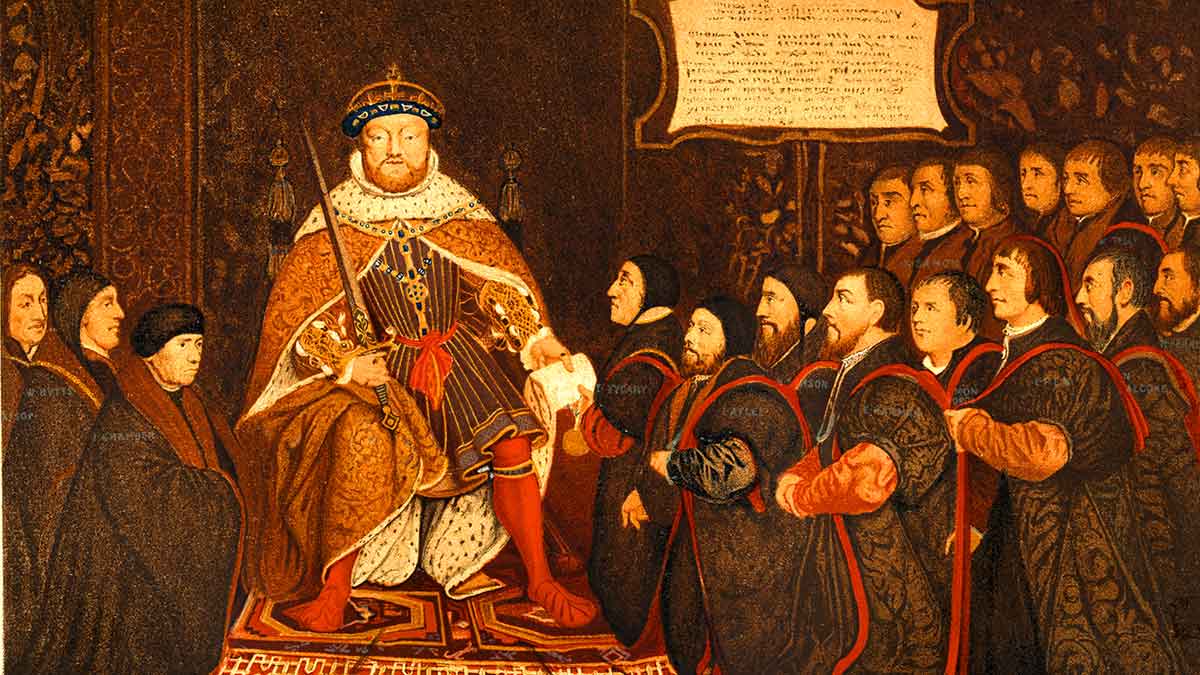ETF Investing during volatility: Who’s giving advice at your fantasy dinner party?

Pic: Getty
If you were to choose five Australian investment leaders to have at a dinner party to talk strategy during volatile times VanEck Australia CEO and Managing Director Asia Pacific, Arian Neiron, would arguably earn a seat at the table.
Considered a thought leader with deep experience in asset management across a range of asset classes, Neiron launched VanEck Australia (which specialises in ETFs) in 2013, but its global heritage stretches back to 1955 where it was founded in New York city.

A brief history lesson. Founder John C. van Eck Jr wanted to give Americans an international investment vehicle to invest in foreign growth stocks. He was a pioneer of international investing and was early to recognise potential opportunities in post-World War II economic recoveries of Europe and Japan.
In 1968, after studying under famed Austrian economist Ludwig von Mises at New York University, van Eck launched the US’s first gold-orientated mutual fund just in time to catch the great gold bull market of the 1970s. During his 50-year career he was a regular commentator on global markets and was heavily involved in industry issues and testified before congress.
To 42-year-old Neiron, van Eck was an influence on his career but so was his late grandfather who survived immense hardship and taught him lessons on preserving and growing wealth.
Neiron was born in Germany but grew up in Perth and every summer returned to his grandparents, who were Holocaust survivors, for holidays.
“I have always had a love affair with financial markets and my grandfather was very big in commodities and currency trading so from a young age he would teach me,” Neiron said.
“He loved the companionship and I got hooked on finance, went to business school and spent around 20 years in asset management and investment banking covering every asset class.
Neiron viewed the performance of many fund managers as “sub-optimal”, charging too much for fees and with little transparency.
“I wanted to establish a business where we had transparency and I’d seen ETFs in the US in the early 2000s and thought it’s going to pick up in Australia,” he said.
He chose VanEck to partner with as one of the largest exchange traded product providers in the US and worldwide with its global CEO Jan van Eck continuing the family tradition.
“Fast-forward 10 years we have 30 products in Australia, with around 66 in the US and more than 40 in Europe.
With so many factors influencing markets now, how would Neiron answer the many questions he may get asked at a dinner party, other than saying I’d just like to enjoy my wine and dinner?
On Inflation and interest rate risk
U.S. inflation reached another 40-year high in January, accelerating to a 7.5% annual rate as strong consumer demand collided with pandemic-related supply disruptions.
In Australia, annual CPI inflation increased 1.3% to 3.5% in the December quarter. Trimmed mean annual inflation, favoured by the RBA because its excludes large price rises and falls, jumped 1% to 2.6%, the highest since June 2014.
The annual rate is fast approaching 4%, above the Reserve Bank of Australia’s of 2-3% target range with economists signalling RBA rate hikes to bring back it back under control later this year.
Unfolding economic fallout from Russia’s invasion of Ukraine is expected to add to inflation globally with energy prices and various commodities surging.
“Our house view is we believed there to be persistent inflation and it wasn’t transitory even early last year and we’ve got that right because we thought the fiscal stimulus was so big that it had to end up with higher consumer and producer prices,” Neiron said.
“Gold is the currency of last resort and in times of stress such as war investors do gravitate towards bullion.
“Gold mining stocks, together with the gold price, rise in episodes with higher volatility but have greater leverage and furthermore, gold and commodities have been employed as an inflation hedge.”
VanEck Gold Miners ETF (ASX:GDX) and Australian Resources ETF (ASX:MVR) are two ETF strategies.
On choosing investments
Neiron said investing in quality companies should be a priority for investors. The VanEck MSCI International Quality ETF (ASX: QUAL) focuses on companies with a high return on equity, low debt and recurring earnings. In 2021 it returned 33.57%.
“Quality companies can return investor capital in a double digit percentage and don’t take on excess risk, too much debt or if they hold debt it is serviceable,” he said
Neiron said importantly earnings of quality companies don’t tend to fluctuate too much with the cycles.
“When you buy quality you’re buying a story of robust companies which can withstand the ups and downs of the economic cycle.
He warned investors to do their homework and due diligence.
“With any company or investment you have to look at valuations you can’t buy something that is super expensive and expect it to make more money because that’s naive,” he said.
“You can’t buy something you think on a whim is going to give you a good return on capital if you haven’t done your due diligence and looked under the bonnet because when the tide turns as Warren Buffet says you can see who’s naked.”
On smart-beta investing in Australia
Neiron’s passion is in designing investment solutions and he is a pioneer of smart beta strategies in Australia.
Smart beta strategies combine systemic approaches of active management within the construct of a passive strategy, in essence combining the best of both worlds.
“Smart beta is like the intersection between active management and pure market cap so if you have the S&P ASX200 on one side and an active manager on the other I created an equally weighted strategy that focuses on liquidity,” he said.
Neiron said liquidity provides price discovery and leads to information efficiency.
“If stocks are liquid it means there are lots of buyers and sellers giving a price discovery mechanism which provides for information efficiency,” he said.
“Then we target 90% coverage to make sure by market cap they’re big enough and then we equally weight it.”
He said the weighting is crucial with a company like miner BHP (ASX:BHP) dominating the ASX200 after ending its dual listing on the London Stock Exchange (LSE) on January 31.
The Big Australian got even bigger after it ended its ~20-year dual listing on the LSE bringing ~$100 billion of shares back home.
BHP’s market capitalisation is now roughly ~$235.6 billion, which is $75 billion more than Commonwealth Bank of Australia (ASX: CBA), which was the ASX’s largest share by market cap before BHP’s ‘unification’.
“”You are taking massive cyclical and BHP company risk so if management gets something wrong you’re in trouble,” he said.
“Equal weight, as a core strategy, has a value tilt, mid-cap tilt and leverages off contrarian trading, so every quarter we re-balance take profits, losses and reset weightings back to equal.”
The company now has 19 Smart Beta ETFs listed on the ASX, including Morningstar Australian Moat Income ETF (ASX:DVDY), QUAL (mentioned earlier) and Morningstar International Wide Moat ETF (ASX: GOAT).
Other ones worth noting are VanEck’s MSCI International Sustainable Equity ETF (ASX:ESGI) and MSCI Australian Sustainable Equity ETF (ASX:GRNV) which cover international equities and Australian equities respectively, and its China New Economy ETF (ASX: CNEW).
On end of multi-decade bond bull market
By all forecasts the bears are coming for the global bond market, which have globally had not a good past couple of months and equally a weak 2021. US Bonds have had a bit of a rebound after sharp declines earlier in the week.
Yields rise when bond prices fall and bond prices fall when interest rates rise. On Thursday (Australian time) the yield on the benchmark 10-year treasury bond was ~1.84%, up from ~1.71% on Tuesday.
Australia’s 10-year bond yield jumped 10 basis points to 2.18% on Thursday, reversing a hefty fall on Wednesday. By all accounts the bond market remains fickle.
“Fixed income is a real area stressing investors because if you look at the traditional growth portfolio you have defensive assets like bonds which always have a place but the thing is we’ve been in a multi-decade bond bull market,” Neiron said.
“Now with rates going up and duration that’s the sensitivity of bonds to rate moves, that’s going to take money off the table.
“If you look at the Australian benchmark which is the AusBond Composite Index, which is the Australian fixed income index, it’s returning negative.
He said ETFs like VanEck’s Australian Floating Rate ETF (ASX:FLOT), Australian Subordinated Debt ETF (ASX:SUBD) and Bentham Global Capital Securities Active ETF (ASX:GCAP) have minimal to no duration.
“You can use ETF’s as a building block to counter this fixed income issue with rates rising,” Neiron said.
On thematic trends
The popularity of ETF’s in Australia continues to grow with record inflows in 2021 at close to $24 billion. Over the 12 months to November 30, 2021 the Australian exchange trade product (ETP) industry jumped in size by 44% to a record $132.66 billion.
A main driver for investors attraction to ETFs was to gain exposure to share markets like the US along with strong thematic trends such as clean energy, sustainable investing, technology, digital currency.
But while thematic ETFs have grown in popularity, Neiron warns investors to approach with caution, with some just too niched.
“There has been a proliferation of thematic ETFs but we would say to investors enter with caution and look at your provider and see their ecosystem to see if they’re just launching ETFs because it looks cool?”
He said the metaverse is one such example of a popular thematic. Social media giant Facebook recently changed its name to Meta but to Neiron only one company is a straight metaverse play.
“Roblox which my daughter plays is really the only true listed metaverse company,” he said.
“You need to ask yourself with thematics is this a structural growth opportunity, is it one or two companies I’m already holding in exchanges or are they unique companies with assets of 50%,” he said.
“Look at BNPL everyone jumped in on it – there is a price for visionary growth and innovation but don’t get caught up with the herd.”
“If you’re a gamer you know FIFA, Call of Duty, Cyberpunk so these are pure gaming companies and the structural growth trend is eSports as a form of media and is even bigger than Super Bowl,” Neiron said.
“The Fortnite World Cup prize pool is bigger than the US golf PGA.”
He said taking the time to learn and do your homework is vital for any investment, including thematic ETFS.
“Last year was a big year for thematics but what investors would’ve noticed is the downturn that came with the market pricing in an increase in interest rates compressed all the valuations of speculative companies or what is now also known as non-speculative technology,” he said.
“Covid accelerated the digitisation trend in terms of people buying online, spending more time online but you need to think of the world in decades not 12-month cycles.
He said focus on the fundamentals as opposed to sales or price to sales ratio.
“We think thematics will compress a bit in terms of flow,” he said.
On staying calm with falls
VanEck was the first to launch a Global Clean Energy ETF (ASX:CLNE), which gives investors exposure to a portfolio of ~30 companies in the provision and production of clean energy.
CLNE shares peaked ~$11.11 in the days after launching in March 2021 but has had a volatile 12 months falling ~17.41% to $8.68, which does not overly concern Neiron.
“That’s a momentum trade – don’t chase past performance and invest don’t speculate when it comes to thematics so look at fundamentals,” he said.
“There will always be a point in time when a company is over-valued where everyone is in it so clean energy ran really hard but when we launched it came off.”
On investing directly in overseas ETS
Neiron warns about the pitfalls of buying international ETF’s through online brokerage.
“Enter with caution firstly because they’re not trading in your time zone when you’re investing,” he said.
“Secondly, you’re not protected by the off-shore regulator so anything that happens to that ETF you may not you’re subservient to the foreign jurisdiction and their laws.”
He said you want Australian protection with ETFs.
“You want to be covered by Australian law, ASIC and a fund manager who holds a licence here,” he said.
“There’s also tax and administrative implications including if you pass away so do your due diligence.”
On the Russia-Ukraine crisis
For Neiron if its not one geo-political crisis its another and he said the Russian-Ukraine conflict is simply another to consider
“There’s always geopolitical risk if it’s not Russia-Ukraine, its Russia-US, China-US, China-Australia or something within Europe,” he said.
“Brexit was a geopolitical risk and in Australia we have political risk with an election this year- how would a change in government effect policy and capital markets?”
“Vaccine mandates and Australia re-opening are all factors we need to think about.”
He said investing is always about managing risk and investors should proceed with caution at all times.
“What is the first rule of investing? It’s don’t lose money and the second rule is read number one.”
“Capital preservation should be there, don’t be enamoured by euphoria or irrational exuberance.”
“Behave like a rational investor and look at fundamentals because they do count.”
And, final words of wisdom
So, as the dinner party winds up and everyone starts heading home, what is the departing advice from our investor thought leader?
“Do your homework and due diligence and think about the world, how it is changing and invest for the long-term,” he said.
“Buy a company and don’t rent a stock but have an investment time horizon, objective and stay true to an investment discipline.”
Oh, don’t forget if buying novel ideas make sure it has a structural growth story he reminds his fellow guests.
“Consider how big is its MOAT and is it easily disrupted by a technology being commoditised,” he said.
“How easy is it to replicate and where is the innovation? It’s about doing your due diligence.”
As he walks down the driveway one last question gets called out to Neiron – “What advice would you give your 18-year-old self as an investor?”
“Life is never perfect so be in the moment and never have regrets.,” he calls back.
“Every investment that didn’t work is a lesson in itself so enjoy the ups as well as the downs.
“Diversify your perspective, speak to as many people as possible, you can not discount other people’s investing experience.”
The views, information, or opinions expressed in the interview in this article are solely those of the interviewee and do not represent the views of Stockhead.
Stockhead does not provide, endorse or otherwise assume responsibility for any financial product advice contained in this article.
UNLOCK INSIGHTS
Discover the untold stories of emerging ASX stocks.
Daily news and expert analysis, it's free to subscribe.
By proceeding, you confirm you understand that we handle personal information in accordance with our Privacy Policy.








